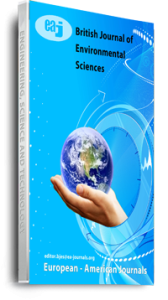Variability in lead adsorption by soil and bentonite was analyzed and results indicated that adsorption of lead increased as volume of Pb2+ solution increased. At 25ml adsorption capacity of bentonite and soil were 2494.19mg/kg and 2372.89mg/kg respectively. Maximum adsorption was observed at 100ml of Pb2+ in both soil and bentonite which were 9031.75mg/kg and 9935.75mg/kg respectively. At all volumes of Pb2+ solution, a significant positive correlation at (p≤0.05 and p≤0.01) probability levels were observed between clay, pH, CEC and organic matter content and adsorption capacity in soil and bentonite. While sand and silt content correlated negatively. Clay, sand, pH, CEC and organic matter content, were indicated to be the vital properties controlling adsorption in soil and bentonite. Bentonite and soil adsorption data were analyzed with both freudlich and langmiur adsorption isotherm, freudlich isotherm showed a better fitting of the adsorption data in both soil and bentonite with correlation factor (R2>0.9).
Keywords: Adsorption of Lead, Batch Studies, Bentonite, Nigeria, Sand, Silt Content

